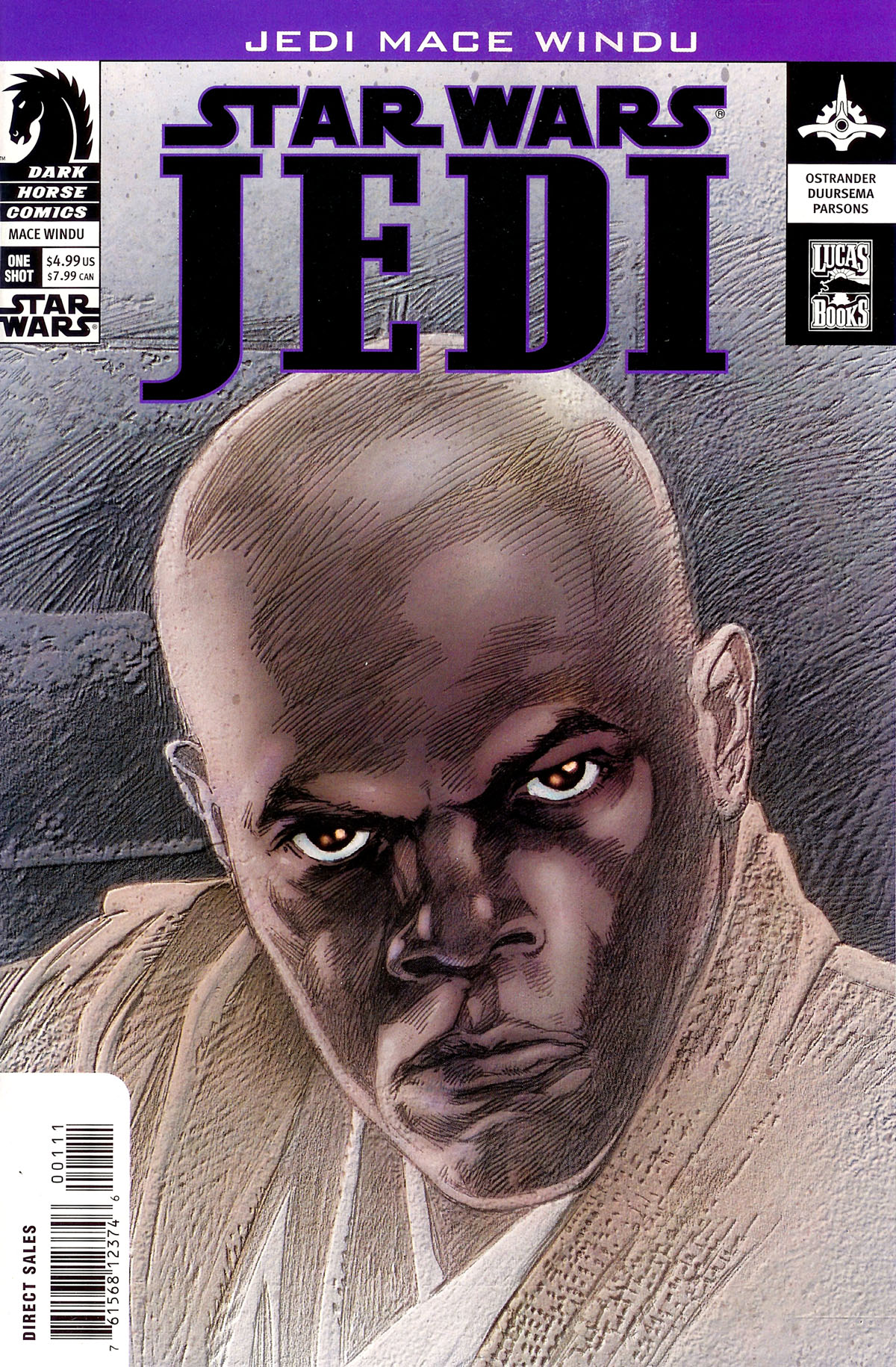 |
| Cover of Jedi: Mace Windu. Master Windu was a prominent figure in early Clone Wars stories. Image from Wookieepedia. |
The chronology of the Clone Wars era of Star Wars is not as clear as I would like it to be.
An initial set of stories set during the conflict, released between 2002 and 2008, were internally consistent with each other and were spread out relatively evenly between Episodes II and III. They included novels, comics, video games, and the 2D animated Clone Wars television series. The timeline, which measured time in "months since the Battle of Geonosis" (the battle which launched the Clone Wars in the third act of Episode II), was printed in every novel.
 |
| Rough timeline of the Clone Wars, in the Legends continuity, pre-2008. Units are in "months after the Battle of Geonosis". Homemade. |
In 2008, Lucasfilm released "Star Wars: The Clone Wars", a 3D animated movie followed by a TV series. While starting weak, this series would go on to include some truly amazing stories. It would also, however, invalidate a lot of the older stories. A release by people within Lucasfilm established that Anakin Skywalker became a Jedi Knight only one month after the war began, even though the older novels put off his knighthood until much later. The solution was that every novel and comic in which Anakin appeared as a Padawan would be compressed down into that first month of the war (stories in which Anakin does not appear or is not referenced, or where he is a Knight, would remain unaffected). References to time (e.g. "We've been fighting this war for four months now.") would be ignored. This solution, while inelegant, let fans continue to enjoy their old stories as well as the new ones coming out as part of The Clone Wars.
 |
| Rough timeline of the Clone Wars, incorporating Star Wars: The Clone Wars (film, first five seasons, novels, games, and comics), 2008-2014. Homemade. |
Then, in December 2012, Lucasfilm and all of its assets were officially transferred to the control of The Walt Disney Corporation. As part of that deal, and Disney's intent to make new Star Wars content, the entirety of the pre-Disney Star Wars Expanded Universe would be ignored for future stories. Those old books and comics would be called "Legends", and while they might be drawn upon for inspiration, they would be considered non-canon by those producing new stories. The only stories which remained canon were the six films and all episodes of The Clone Wars (as well as the pilot movie).
 |
| Accurate (as much as possible) timeline of the Clone Wars in the new canon. Homemade. |
This declaration of old content into Legends was, in my view, a brilliant move. It gave Disney the freedom to make whatever new stories they wanted, drawing the best parts from the old Expanded Universe as they see fit. It also eliminated the problem of The Clone Wars contradicting novels and comics, including in terms of the timeline.
That said, for the purposes of my read-through, I have opted to use the hybrid timeline shown in Figure 2. The main reason for this is that I am going to read the novels and comics, and watch videos of the video games, released under the banner of The Clone Wars but which have also been declared Legends. Also, certain elements of The Clone Wars are referenced in other works which were released around the same time (e.g. the events of the Mortis trilogy of episodes impact the Fate of the Jedi series set around sixty years later; Darth Maul's backstory of being a Dathomirian Nightbrother was integrated into some novels and short stories).
Therefore, in this first post of Clone Wars content, I have enjoyed stories that were, ostensibly, set in the first weeks of the conflict:
- The Clone Wars (video game by Pandemic Studios and LucasArts, 2002)
- The New Droid Army (video game by Helixe and THQ, 2002)
- Galactic Battlegrounds: Clone Campaigns (video game expansion by Ensemble Studios and LucasArts, 2002)
- Republic 49: Sacrifice (comic by John Ostrander, 2003)
- Republic 50: The Defense of Kamino (comic by John Ostrander, Haden Blackman, and Scott Allie, 2003)
- Jedi: Mace Windu (comic by John Ostrander, 2003)
- Republic 51-52: The New Face of War (comic by Haden Blackman, 2003)
- Republic 53: Blast Radius (comic by Haden Blackman, 2003)
- Jedi: Shaak Ti (comic by John Ostrander, 2003)
- Republic 54: Double Blind (comic by John Ostrander, 2003)
- Jedi: Aayla Secura (comic by John Ostrander, 2003)
- Jedi: Count Dooku (comic by John Ostrander, 2003)
- Republic 55-58: The Battle of Jabiim (comic by Haden Blackman, 2003)
- Republic 59: Enemy Lines (comic by John Ostrander, 2003)
- Shatterpoint (novel by Matthew Stover, 2003)
- Equipment (short story by Matthew Stover, 2003)
- Legacy of the Jedi (middle-grade novel by Jude Watson, 2003)
Story:
In the opening weeks of the Clone Wars, the Republic must frantically react to the aggression of the droid armies of the Confederacy of Independent Systems.
The Clone Wars, The New Droid Army, and Clone Campaigns all see the Confederacy acquire and deploy new weapons (a Force-based life destroyer, a new type of lightsaber-resistant super battle droid, and a heavy tank, respectively), which the Republic and its Jedi-led clone army must eliminate.
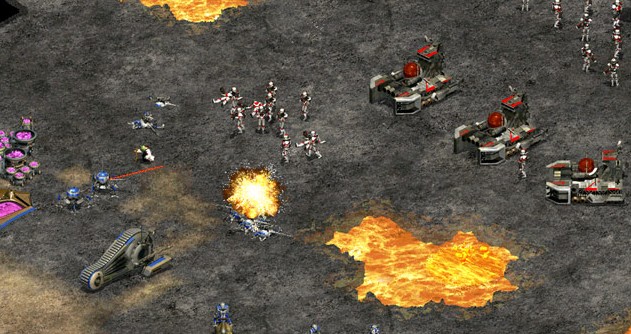 |
| Battle of Sarapin, from Galactic Battlegrounds: Clone Campaigns. The stolen Decimator tanks are living up to their name as they attack Republic forces. Image from Wookieepedia. |
The comics seem to follow two primary arcs. One follows Quinlan Vos, a major character from the pre-Clone Wars comics, has established an underworld spy ring to get information for the Jedi. He is sent to infiltrate the Separatists, pretending to have fallen to the Dark Side. In doing so, he actually does fall under Count Dooku's sway, adding another major Force user to the Separatist ranks. Meanwhile, his closest allies fight and defeat the bounty hunter Aurra Sing. The other arc follows Anakin Skywalker and an ARC Trooper named Alpha, who fight across multiple fronts against Separatist forces led by the Dark Jedi Asajj Ventress and the bounty hunter Durge. Anakin's master, Obi-Wan Kenobi, is presumed killed at the Battle of Jabiim, which pushes Anakin down a dark path, but he has in fact been kidnapped by Ventress.
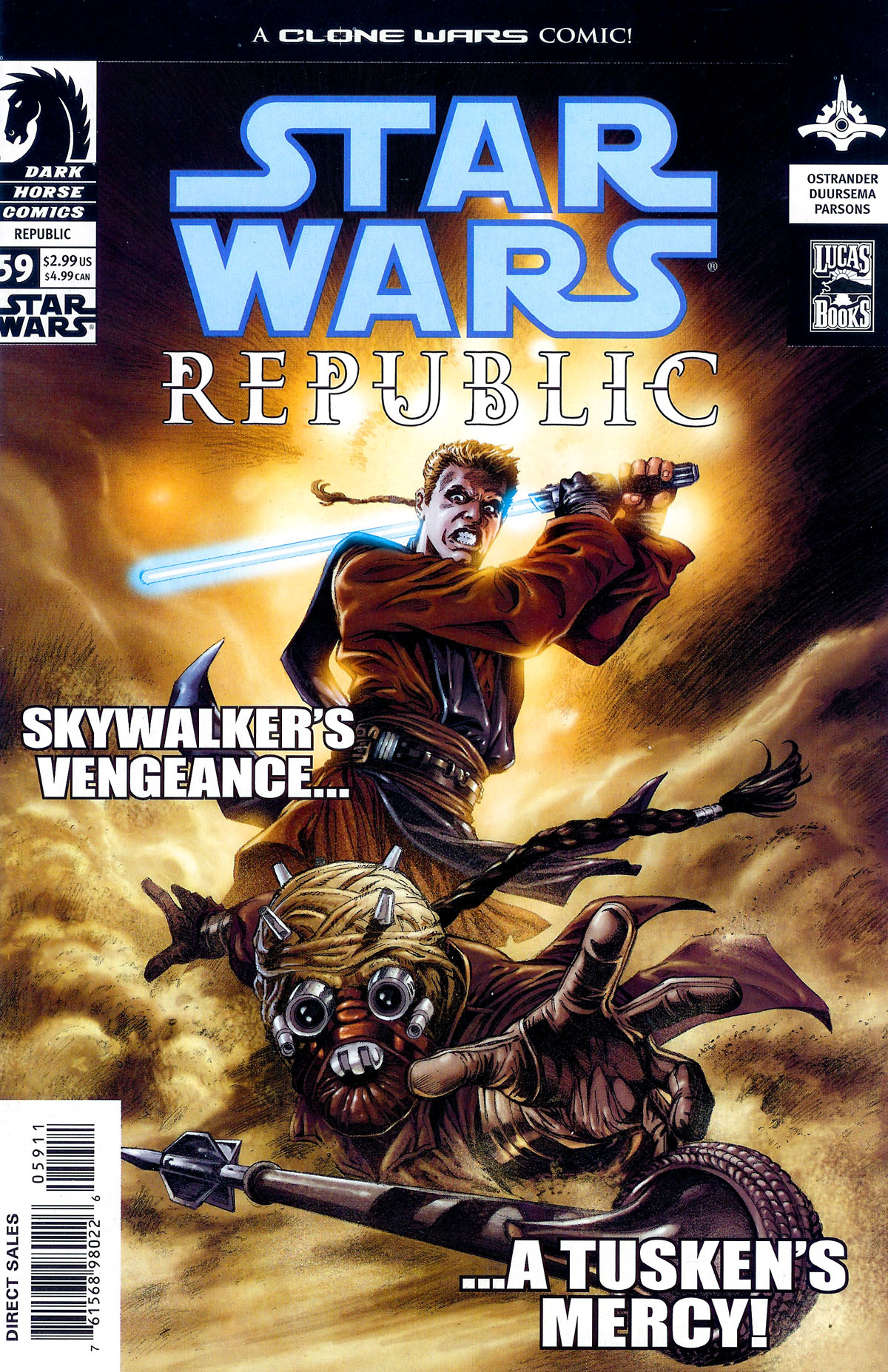 |
| Cover of Republic #59, in which Anakin temporarily becomes the apprentice of A'Sharad Hett, a Jedi Knight who is also a Tusken Raider, whom Anakin hates with a passion. Image from Wookieepedia. |
Shatterpoint depicts the conflict on Jedi Master Mace Windu's home planet of Haruun Kal. Politically aligned with the Separatists, Haruun Kal's offworlder population waged brutal war against the native peoples living in the jungle. Windu's former apprentice, Master Depa Billaba, was embedded among the natives and goes mad from being steeped in so much violence. Windu arrives and while things go back and forth for him, he manages to seize the planet for the Republic, arrest the leader of the native army, and bring his old Padawan home. The short story Equipment depicts the clone army's attempted landing on Haruun Kal from the perspective of one clone trooper.
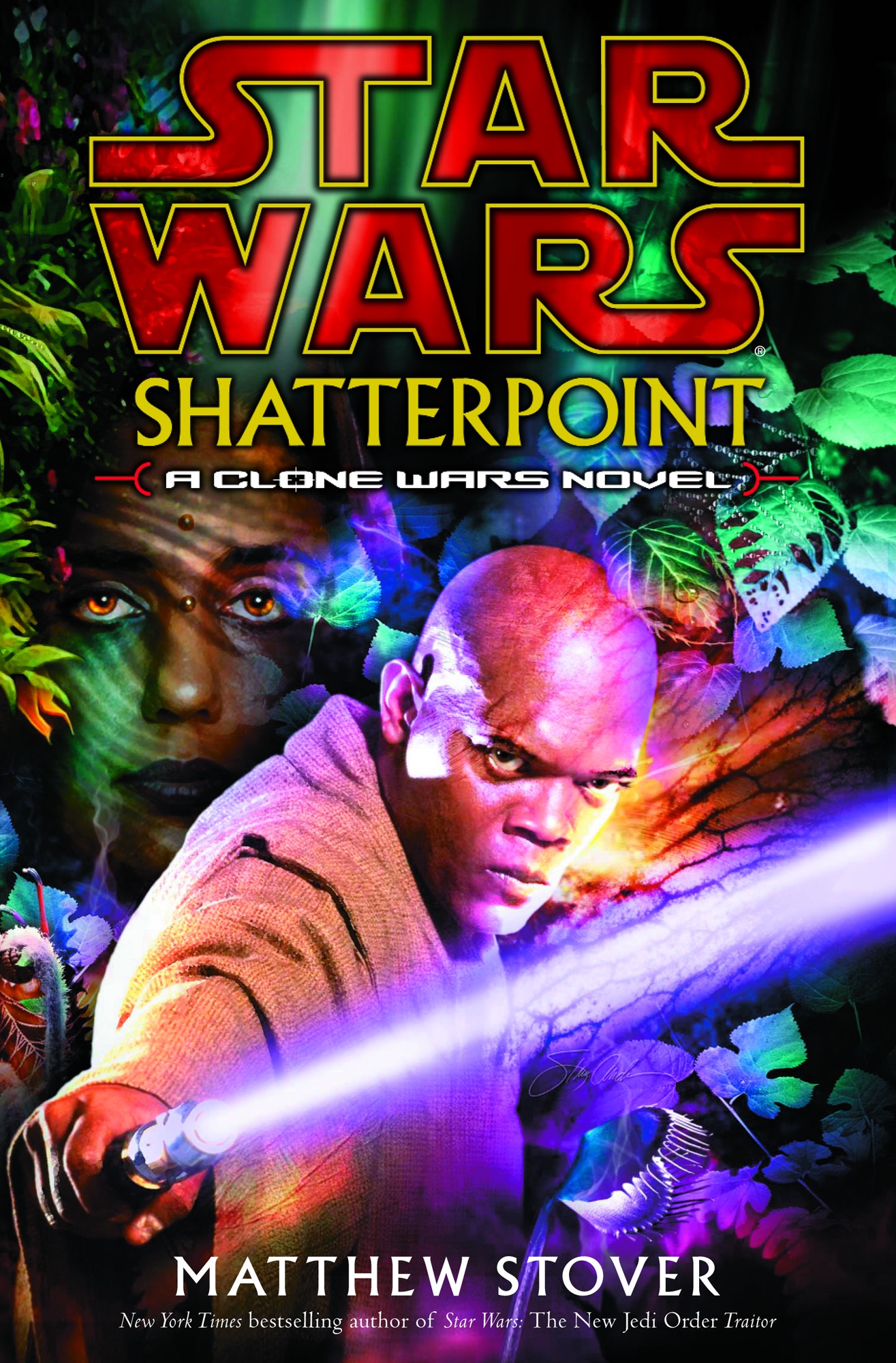 |
| Shatterpoint, by Matthew Stover. Image from Wookieepedia. |
Legacy of the Jedi follows first Dooku as a new Padawan, then Knight Dooku and his apprentice, Qui-Gon Jinn, then Master Qui-Gon and Obi-Wan Kenobi, and finally Obi-Wan and Anakin in the early days of the Clone Wars, as they respond to the actions of one person. Lorian Nod was a Jedi initiate and friend to Dooku until he was expelled from the Order. He acted as a villain, first as a pirate and then a power-hungry soldier, foiled by the Jedi at every turn, until as an old man he was able to confront Count Dooku, now a Sith Lord, realizing that the start of his downturn came at Dooku's hands all those decades earlier.
Thoughts:
These early stories of the Clone Wars all have something in common: they depict the actions of the Jedi and/or clone troopers at the immediate start of the war. Many Jedi are reluctant to become generals, though Anakin Skywalker, still a Padawan Learner, is eager to prove himself. The Dark Side permeates everything as Count Dooku and his minions attack the Republic.
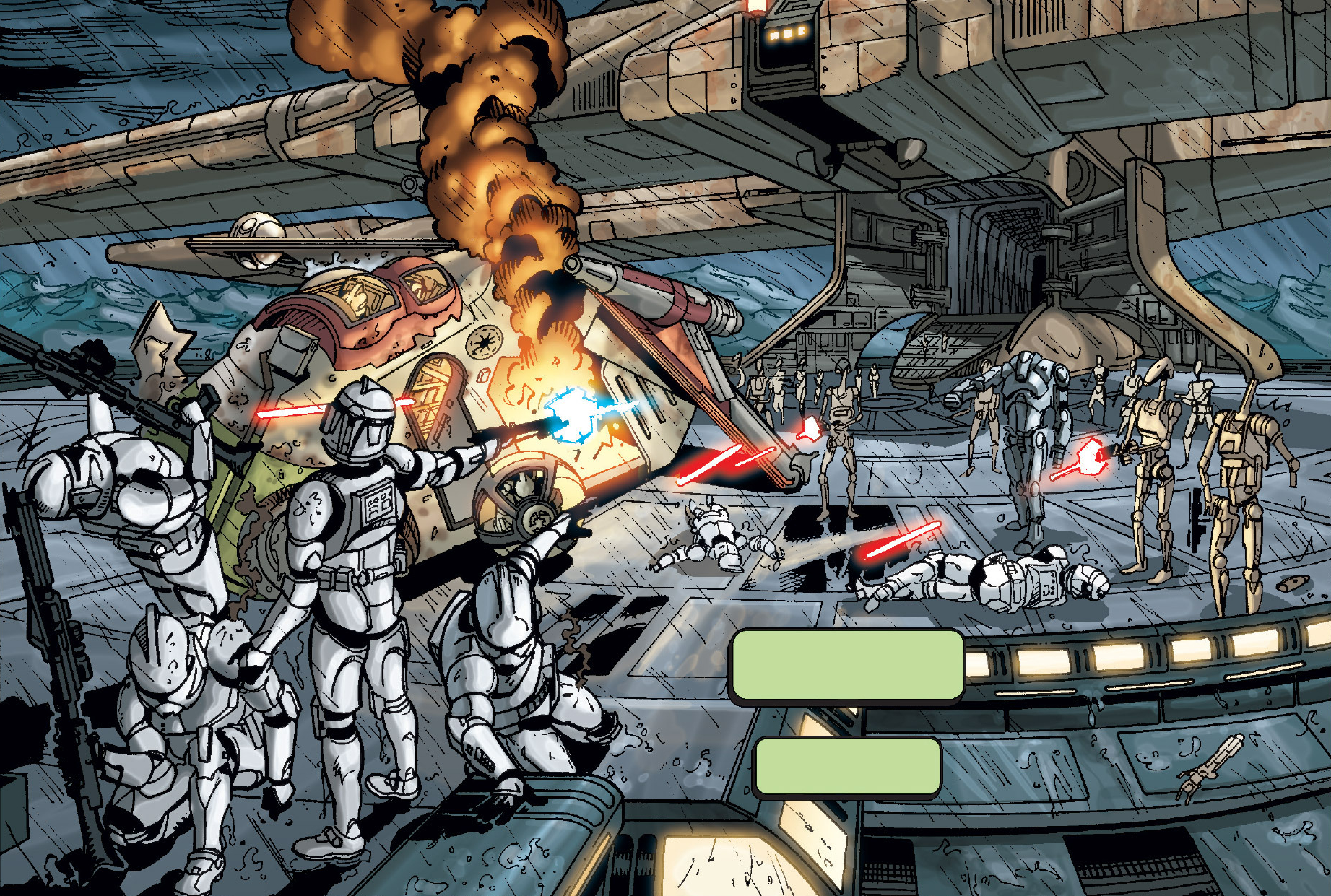 |
| First Battle of Kamino, from Republic #50. Kamino, where the clone troopers were grown, proved too enticing a target for the Separatists in the early war. Image from Wookieepedia. |
Shatterpoint was a fantastic novel and reminded me of the quality of Matthew Stover's writing. The text is dense, and it takes a while to read, but the story was nothing short of fantastic. It explores the sort of people that grow up surrounded by war, and the hatred that such conflict can breed. I can't wait to read his next chronological work (the Revenge of the Sith novelization).
The comics were quite enjoyable, and I look forward to continuing them in "Early Clone Wars, Part 2". The two overlapping stories, those of Quinlan Vos, Aayla Secura, Tholme, and others and those of Anakin and Obi-Wan, flow nicely between each other. If I were buying this series monthly as it was coming out, I probably wouldn't have found the jumps between characters jarring. The extra long Jedi specials stood out as being particularly good, as was the Battle of Jabiim story, where the Republic fought to defend the rainy, muddy planet for a month, their forces led by Anakin and a number of other masterless apprentices, until at last Anakin is the last one standing, and he is ordered away as the Republic abandons the planet.
 |
| Quinlan Vos murders his aunt, Sheyf Tinté, which helps cement his fall to the Dark Side. Image from Wookieepedia. |
The video games were of mixed quality. The New Droid Army suffers from its platform (it was for the Game Boy Advance, and as such its mechanics and graphics were bad), and its climax, wherein you kill Count Dooku, required a bad retcon. Clone Campaigns was fun, and it was the only one with a Separatist story as well (though even on easy mode I had to use cheat codes to win; real time strategy games require far more attention to detail than I'm willing to provide). The Clone Wars was cool, letting you pilot a variety of tanks and other vehicles as you tried to push back the Separatists in those first few days of the war.
Another thing I want to comment on is how interconnected these stories were, and how they referenced each other. The comics and Legacy of the Jedi mentioned the battle of Raxus Prime, which we played in The Clone Wars (and I know we'll revisit with the Boba Fett middle-grade books). Others refer to events in the Clone Wars 2D animated series (which is next on my list). The people who wrote these stories clearly collaborated to make sure that their works fit together nicely. Furthermore, I like the tie-in to the Tales of the Jedi era, with the Force Harvester and Dark Reaper from The Clone Wars were relics of the Great Sith War, and you find information from it in Ulic Qel-Droma's tomb on Rhen Var (from Tales of the Jedi: Redemption).
Certain elements from this era were adopted into the new canon in one form or another. In The Clone Wars video game, we visited Raxus Prime, a garbage planet that was once capital of the Confederacy of Independent Systems. In the new canon, they kept the name Raxus for the capital, though it was a verdant world, and garbage dumping worlds were renamed Lotho Minor and Bracca. Kamino was also attacked in the third season of The Clone Wars, as it was in Republic #50. Naboo was hit with a biological weapon, the Blue Shadow Virus, in that same TV series; in the comics it was the Gungan-settled moon of Ohma-D'un. The ARC Trooper Alpha was reimagined into the clone trooper Rex, an important figure in The Clone Wars, The Bad Batch, and Rebels. Finally, the arc of Quinlan Vos falling to the Dark Side is mirrored in the novel Dark Disciple.
Overall, aside from The New Droid Army, I enjoyed these early stories of the Clone Wars, and I look forward to seeing where it all goes.
Next:
My next Legends post (Part 19) will cover some more early Clone Wars stories, focusing on the first two seasons of the Clone Wars 2D animated series and the tie-in comics. I'll go back to finish the early novels and comics ("Early Clone Wars, Part 2") in Part 20.









Comments
Post a Comment